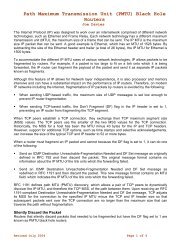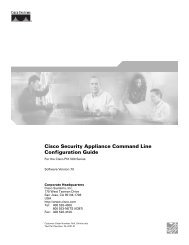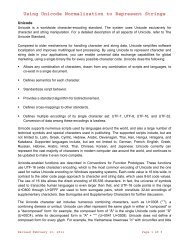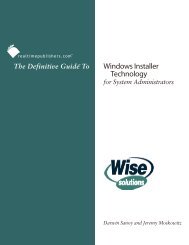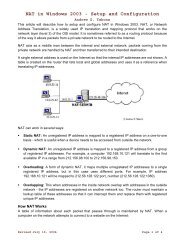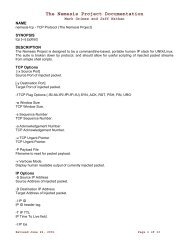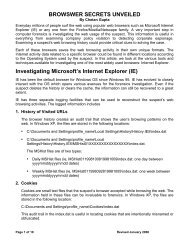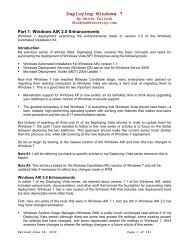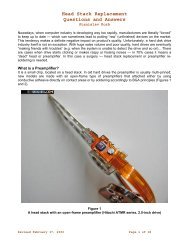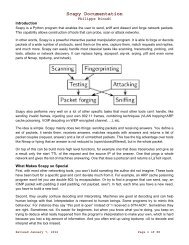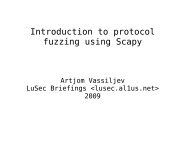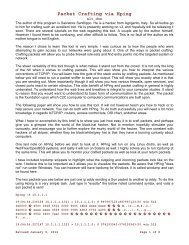Byte and Bit Order Dissection
Byte and Bit Order Dissection
Byte and Bit Order Dissection
Create successful ePaper yourself
Turn your PDF publications into a flip-book with our unique Google optimized e-Paper software.
<strong>Byte</strong> <strong>and</strong> <strong>Bit</strong> <strong>Order</strong> <strong>Dissection</strong><br />
Kevin Kaichuan He<br />
In this approach, we do not swap bytes, but we do swap the bits within each byte lane (bit at device<br />
bit-offset i goes to bus bit-offset (7-i), where i=0...7) in hardware wiring. <strong>Byte</strong> Consistent means the<br />
semantic of the byte is preserved.<br />
After applying this method, the big endian NIC device value in above results in this CPU/bus value:<br />
Now, the three bytes of the vlan field are in contiguous memory space, <strong>and</strong> the content of each byte<br />
reads correctly. But this result still looks messy in byte order. However, because we now occupy a<br />
contiguous memory space, let the software do a byte swap for this 5-byte data structure. We get the<br />
following result:<br />
We see that software byte swapping needs to be performed as the second procedure in this<br />
approach. <strong>Byte</strong> swapping is affordable in software, unlike bit swapping.<br />
Kevin's Theory #2: In a C structure that contains bit fields, if field A is defined in front of field B, then<br />
field A always occupies a lower bit address than field B.<br />
Now that everything is sorted out nicely, we can define the C structure as the following to access the<br />
descriptor in the NIC:<br />
struct nic_tag_reg {<br />
uint64_t vlan:24 __attribute__((packed));<br />
uint64_t rx :6 __attribute__((packed));<br />
uint64_t tag :10 __attribute__((packed));<br />
};<br />
Endianness of Network Protocols<br />
The endianness of network protocols defines the order in which the bits <strong>and</strong> bytes of an integer field<br />
of a network protocol header are sent <strong>and</strong> received. We also introduce a term called wire address<br />
here. A lower wire address bit or byte always is transmitted <strong>and</strong> received in front of a higher wire<br />
address bit or byte.<br />
In fact, for network endianness, it is a little different than what we have seen so far. Another factor is<br />
in the picture: the bit transmission/reception order on the physical wire. Lower layer protocols, such as<br />
Ethernet, have specifications for bit transmission/reception order, <strong>and</strong> sometimes it can be the reverse<br />
of the upper layer protocol endianness. We look at this situation in our examples.<br />
The endianness of NIC devices usually follow the endianness of the network protocols they support,<br />
so it could be different from the endianness of the CPU on the system. Most network protocols are big<br />
endian; here we take Ethernet <strong>and</strong> IP as examples.<br />
Revised September 2, 2003 Page 5 of 8



